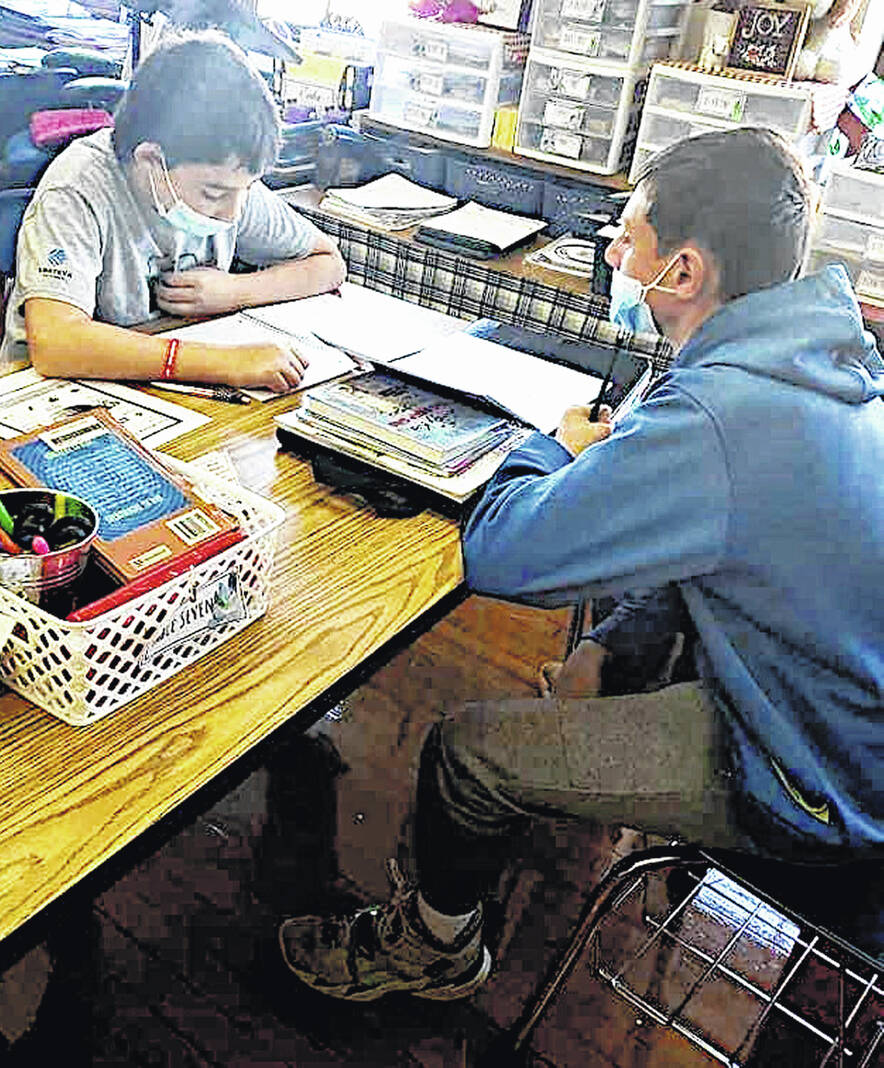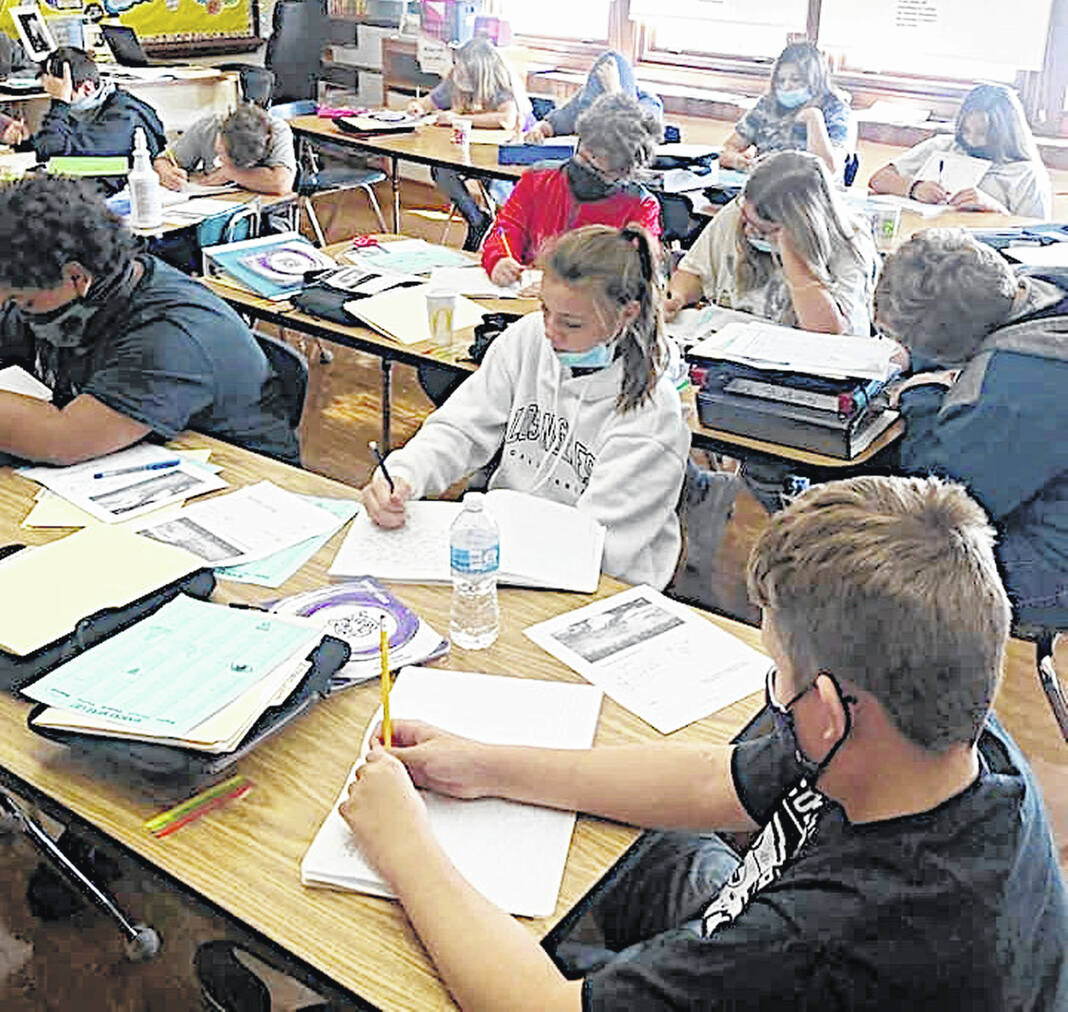

This school year, Greenfield Middle School students are taking on a fundamental skill in a new way, and it’s paying off.
Through the Ohio Writing Project (OWP) through Miami University, English teachers are learning better ways to guide students to not just being better writers, but to being confident and capable writers.
Throughout the year, middle school English teachers have met with OWP instructors who provide and demonstrate engaging writing strategies and lessons. It’s something to not only help students learn about writing in a new way, but also to help teachers in their instruction.
According to middle school principal Jason Potts, the focus on writing wasn’t really present before the project, as all things relating to the English Language Arts (ELA) was combined into one block of time. This year saw that block split so that there was time devoted just to writing.
“Good writers are good readers, but it doesn’t always work the other way around,” Potts said.
Because that block was previously for all things ELA, Potts said he knew teachers would need additional support if there was going to be real success with teaching writing specifically. That’s where OWP came in. He said he went to an OWP training a few years ago and it was “the best outside training” he ever attended. So he knew right away who was going to be the support for the teachers.
“OWP is designed not only to have kids write, but to enjoy it,” he said. “Students are writing more than teachers can read, and that’s OK. Teachers then can use selected writing pieces to make students stronger writers.”
While Potts noted teachers were hesitant at first, they have since “grabbed onto” the ideas OWP has offered and are seeing the students’ writing bloom.
Teacher Anna Black said OWP promotes writing frequency for extended periods of time frames and encourages strategies geared toward engaging students with the world around them. Because of that, students use a lot of observational cognitive thinking, like writing about things they notice and things they wonder about. It’s a strategy Black says encourages students to slow down, take a closer look, and communicate freely.
She said there are set periods of time for something called quick-writes, as well as for strategies that apply to an extended writing project. With the quick-writes, students engage in a brief, timed writing opportunity in their notebooks. It can last anywhere from two to 10 minutes, Black said, and it integrates writing with critical thinking.
Amanda Collier, a seventh grade ELA teacher, said those notebooks also serve as a place for students to generate ideas for creative writing and also for quick writing. Students use their notebooks, too, to “mine” for future ideas, which is helped by the table of contents each student makes for their notebook.
She said in the notebooks there are no worries about grammar, spelling or organization. It’s about writing, and they get to the grammar in other ways that OWP has managed to make exciting and engaging for the students, she said. So, instead of students going through a worksheet of grammatical errors to correct, they now spend a few days exploring grammar in a new way.
On day one, Collier said students are presented with a model sentence from a published work and students share what they notice about the sentence and make a class list with all those things. The next day, a similar sentence is introduced and both sentences are compared to see if students can pinpoint the grammatical topic they will be working with. On days three and four, students imitate the sentences and apply the knowledge to other engaging activities. Day five is for discussing sentences to determine if they need to be edited or revised. Collier said this was particularly important when they talked about sentence fragments.
While students learned to recognize fragments, they also discussed examples where authors intentionally chose to use them.
Collier related an exercise that students found particularly fun where they took dependent clauses and used them to construct passive-aggressive letters. An example of this, she said, was: “Dear Gum Chewer, As you may know, people really hate it when you stick your gum under the table. Sincerely, Ruined Soccer Shorts.”
“The classes are about treating them as writers,” Collier said, and giving students the tools and choices to engage in the writing process.
Potts said the plan is to continue with OWP next school year and stay on the path of more focused writing instruction and enabling students to become better writers.
“Writing is a key to improvement in every other subject,” Potts said. “We still have a hill to climb when it comes to writing, but that’s better than the mountain it was before we started using OWP.”
Angela Shepherd is a correspondent for the Greenfield Exempted Village School District.



